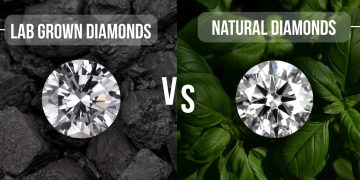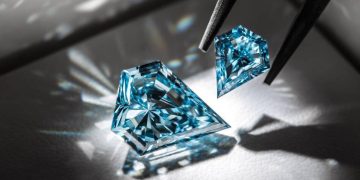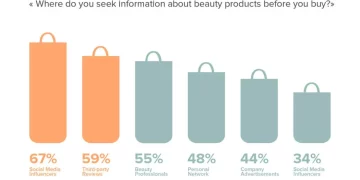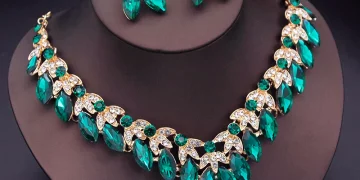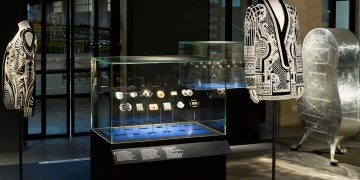The jewelry industry has long been associated with luxury, elegance, and timeless beauty. However, in recent years, there has been growing scrutiny over the environmental and ethical implications of jewelry production, particularly in relation to the sourcing of materials. As concerns over sustainability intensify globally, the question arises: Will the use of sustainable jewelry materials become the new standard in the industry?
Sustainability in the jewelry sector refers to the practices that minimize environmental harm, ensure ethical sourcing, and promote long-term viability. Consumers, especially younger generations, are increasingly prioritizing sustainability when making purchasing decisions, and brands are responding by seeking out sustainable alternatives for diamonds, metals, and other gemstones. But can this shift to sustainable jewelry materials become the industry norm? This article delves into the factors driving this transformation, the challenges involved, and the potential for sustainable materials to become the new standard in the jewelry industry.
1. The Growing Demand for Sustainable Jewelry
A. Consumer Consciousness and Ethical Consumerism
Over the past decade, there has been a significant increase in consumer awareness regarding the environmental and social impact of the products they purchase. This growing consciousness is particularly strong among younger consumers, including Millennials and Generation Z, who are more inclined to align their purchasing decisions with their values. According to several surveys, these consumers are not only looking for high-quality products but also for brands that reflect their ethical values—sustainability being a core aspect.
In the context of jewelry, consumers are more concerned than ever about the sources of the materials used in their pieces. Conflict diamonds, mined under exploitative conditions, and precious metals extracted from environmentally destructive mining operations have led many to seek out alternatives. In response, there has been an increasing demand for sustainable, ethical, and transparent sourcing of jewelry materials.
B. The Rise of Eco-Friendly Brands and Certifications
As sustainability has moved from a niche concern to a mainstream priority, numerous jewelry brands have adopted eco-friendly practices. Companies are not only using recycled metals but also embracing lab-grown diamonds, ethically sourced gemstones, and conflict-free mining operations. These brands are setting new industry standards by leading the charge for sustainability and transparency, demonstrating that it is possible to create luxury products without compromising ethical values.
Certifications such as Fairmined for gold and Responsible Jewellery Council (RJC) certification for ethical sourcing are becoming important indicators of a brand’s commitment to sustainability. More jewelry brands are adopting these certifications to signal to consumers that their products are sourced responsibly. As the importance of these certifications grows, it could push the entire industry to adopt higher standards of sustainability.
2. Sustainable Materials in Jewelry: What Are the Alternatives?
A. Recycled and Reclaimed Metals
One of the most significant advancements in sustainable jewelry materials is the increased use of recycled metals. Traditional gold mining has long been associated with environmental degradation, including deforestation, water pollution, and carbon emissions. In response, many jewelry brands have begun to use recycled gold, silver, and platinum in their designs. Recycled metals reduce the need for new mining, lowering the overall environmental impact of jewelry production.
Recycled metals are not only more eco-friendly but can also maintain the same quality and durability as newly mined metals. Additionally, they offer the potential for a circular economy in the jewelry industry, where materials are reused and repurposed, thus minimizing waste and reducing the need for virgin resources.
B. Lab-Grown Diamonds and Gemstones
Another major development in sustainable jewelry is the rise of lab-grown diamonds and synthetic gemstones. Lab-grown diamonds are chemically identical to natural diamonds but are created in a controlled laboratory environment, significantly reducing the environmental damage associated with traditional diamond mining.
Lab-grown diamonds also offer the advantage of being conflict-free, addressing ethical concerns around diamond mining in war-torn regions. As technology improves, the cost of lab-grown diamonds continues to decrease, making them more accessible to a broader range of consumers. Similarly, synthetic gemstones, such as lab-grown sapphires, emeralds, and rubies, provide an alternative to mining and offer a sustainable option for consumers seeking fine jewelry without the environmental and ethical concerns.
C. Alternative Gemstones and Materials
In addition to diamonds, other alternative gemstones are gaining popularity due to their sustainability credentials. Gemstones like moissanite, sphene, and tanzanite are not only beautiful but often less resource-intensive to mine compared to traditional gemstones. Wood, recycled glass, bone, and precious resins are also gaining traction as innovative, eco-friendly materials for jewelry design.
The use of these materials, when sourced responsibly, offers a way to create distinctive, sustainable jewelry pieces that resonate with environmentally-conscious consumers.
3. The Challenges in Making Sustainable Jewelry the Standard
While there is a growing interest in sustainable materials, there are several challenges that the jewelry industry faces in making these materials the new standard:
A. The High Cost of Sustainability
One of the primary barriers to the widespread adoption of sustainable jewelry materials is the higher cost associated with these materials. For example, lab-grown diamonds, while generally less expensive than mined diamonds, can still be priced higher than natural diamonds, particularly when considering the energy and technology needed to create them.
Similarly, ethical sourcing certifications, sustainable mining practices, and recycled metals often come with a higher price tag due to the more complex supply chains and greater transparency required. For many consumers, this added cost can be a deterrent, especially when traditional jewelry brands offer lower-priced options that may not prioritize sustainability.
However, as consumer demand for sustainable options continues to grow, economies of scale and advances in technology may help to reduce these costs over time. Furthermore, the long-term environmental and ethical benefits of sustainable jewelry could eventually outweigh the initial investment, making these materials more attractive to consumers.

B. Education and Transparency
Another significant challenge is the lack of transparency within the jewelry supply chain. In many cases, consumers may not know the origins of the materials used in the jewelry they purchase. To address this, jewelry brands must be proactive in educating consumers about the environmental and ethical impact of their purchases, as well as the sustainable practices they employ.
Clear labeling and certifications can play an essential role in fostering consumer trust. However, for these certifications to be effective, there must be consistent standards and third-party verification across the industry. Without this transparency, the risk of “greenwashing” (the practice of falsely marketing products as environmentally friendly) remains a concern.
C. Resistance to Change
The jewelry industry has deep roots in tradition, and many designers, manufacturers, and consumers still hold fast to conventional materials like mined diamonds and gold. This cultural attachment to traditional materials can create resistance to adopting newer, more sustainable alternatives.
Moreover, some may question whether lab-grown diamonds, for example, can hold the same prestige or emotional value as natural diamonds. Overcoming these perceptions will require time, education, and an open-minded approach to innovation in the jewelry industry.
4. The Future of Sustainable Jewelry
Despite these challenges, the future of sustainable jewelry looks promising. The growing demand for eco-friendly products, coupled with innovations in sustainable materials and manufacturing techniques, is pushing the industry toward greater sustainability. Jewelry brands that embrace these changes will likely find themselves at the forefront of a new era, where sustainability becomes an essential part of the consumer experience.
For sustainable materials to become the industry standard, continued collaboration across the supply chain is crucial. This includes greater cooperation between designers, manufacturers, and consumers to create a transparent, ethical, and eco-friendly jewelry ecosystem.
Moreover, technological advances in areas like 3D printing, lab-grown gemstones, and AI-powered design will further drive the industry toward sustainability. As these technologies mature, they will reduce costs and make sustainable materials more accessible to a broader audience.
Conclusion: Will Sustainable Jewelry Materials Become the New Standard?
The answer seems to be yes, but it will take time. While challenges remain, the growing demand for sustainable, ethical, and eco-friendly jewelry materials is undeniable. As consumers increasingly prioritize sustainability, jewelry brands that fail to adapt to these expectations may find themselves at a disadvantage.
With ongoing innovations in sustainable materials, improved supply chain transparency, and a greater emphasis on responsible consumption, sustainable jewelry is likely to become the new standard in the industry. Jewelry will no longer be just a symbol of luxury—it will also be a reflection of a consumer’s values, ethics, and commitment to protecting the planet.
In the coming years, as the jewelry industry evolves, sustainability may very well become the norm, rather than the exception.

